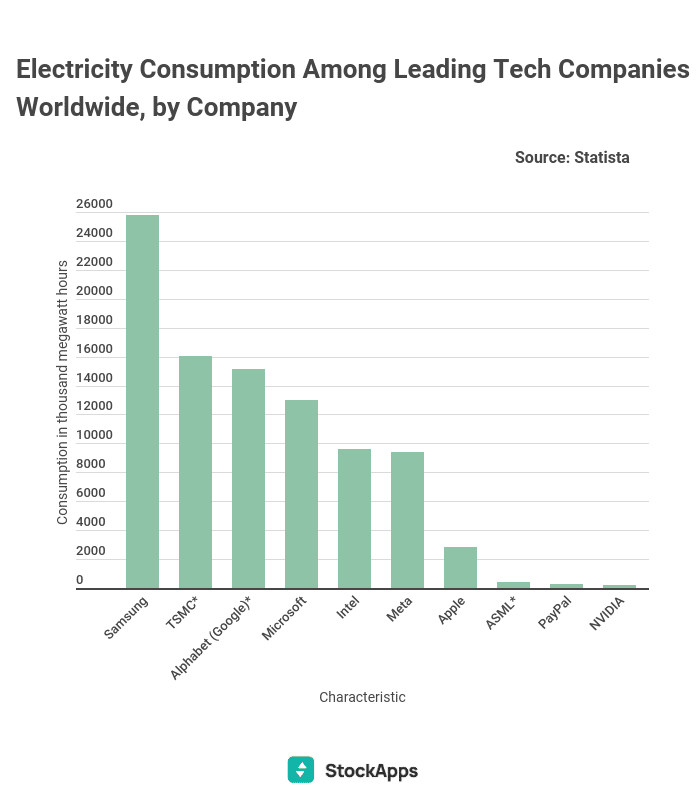
Large companies spend millions of dollars on their electricity bills every year. Technology companies dominate the list of the top 10 biggest electricity consumers.
Samsung, the third largest technology company by revenue globally, is the biggest electricity tech consumer in the world. According to StockApps.com, Samsung uses 25 million megawatt-hours (MWh) of electricity.
StockApps Financial expert Edith Reads says, “The technology sector is one of the most electricity-intensive sectors. The high electricity consumption of tech companies is because they have data centers which require a lot of power to run.”
Reads also notes that “Samsung’s high electricity consumption is not surprising given its size and scale. The company has a wide range of businesses, including semiconductors, consumer electronics, and telecommunications.”
High Electricity Usage
Samsung’s consumption is more than double the amount of electricity used by its closest rival, Taiwan Semiconductor Manufacturing Company (TSMC) which comes in at second place with 16MWh. In third place is Alphabet (15MWh), followed by Microsoft (12.9MWh) in fourth, Intel (9.6MWh) in fifth, Meta (9.4MWh) in sixth and Apple (2.8MWh) in seventh.
Microsoft, Meta and Apple’s combined electricity consumption is still less than Samsung’s single-handed consumption. This is despite Meta and Apple being in the top 10 list of the world’s most valuable brands.
The high electricity usage of these companies has environmental consequences. Most of the electricity these companies use comes from fossil fuels which release greenhouse gases into the atmosphere.
These emissions contribute to climate change, which is a global problem. The Intergovernmental Panel on Climate Change (IPCC) warns that we need to take urgent action to reduce emissions and prevent the worst effects of climate change.

Switch to Renewable Energy Sources
As the world’s largest electricity consumer, Samsung is responsible for leading the way in reducing its carbon footprint. The company has taken some steps in this direction, such as setting goals to increase the proportion of renewable energy it uses.
Samsung is committed to mitigating the threats of climate change through comprehensive measures that include reducing emissions, adopting new sustainability practices and developing innovative technologies and products that are better for our planet. However, it still has a long way to go to meet its goals.
The company said that while it plans to use only renewable electricity at its home by 2027, doing it would be more challenging. It acknowledged that renewable energy supplies in South Korea “have begun to expand but remain limited.”
Some of Samsung’s investors, including APG Dutch pension fund manager, said the company’s plan could make a big difference in cleaning up South Korea’s electricity market.

Question & Answers (0)